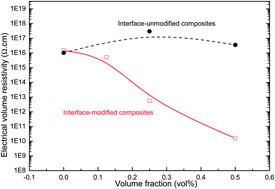Covalently bonded interfaces for polymer/graphene composites†
Abstract
The interface is well known for taking a critical role in the determination of the functional and mechanical properties of

* Corresponding authors
a
Department of Energy Application Engineering, Far East University, Tainan City 744, Taiwan
E-mail:
hckuan@cc.feu.edu.tw
Tel: +886-922948363
b School of Engineering, University of South Australia, SA5095, Australia
c Mawson Institute, University of South Australia, SA5095, Australia
The interface is well known for taking a critical role in the determination of the functional and mechanical properties of

 Please wait while we load your content...
Something went wrong. Try again?
Please wait while we load your content...
Something went wrong. Try again?
J. Ma, Q. Meng, A. Michelmore, N. Kawashima, Z. Izzuddin, C. Bengtsson and H. Kuan, J. Mater. Chem. A, 2013, 1, 4255 DOI: 10.1039/C3TA01277H
To request permission to reproduce material from this article, please go to the Copyright Clearance Center request page.
If you are an author contributing to an RSC publication, you do not need to request permission provided correct acknowledgement is given.
If you are the author of this article, you do not need to request permission to reproduce figures and diagrams provided correct acknowledgement is given. If you want to reproduce the whole article in a third-party publication (excluding your thesis/dissertation for which permission is not required) please go to the Copyright Clearance Center request page.
Read more about how to correctly acknowledge RSC content.
 Fetching data from CrossRef.
Fetching data from CrossRef.
This may take some time to load.
Loading related content
